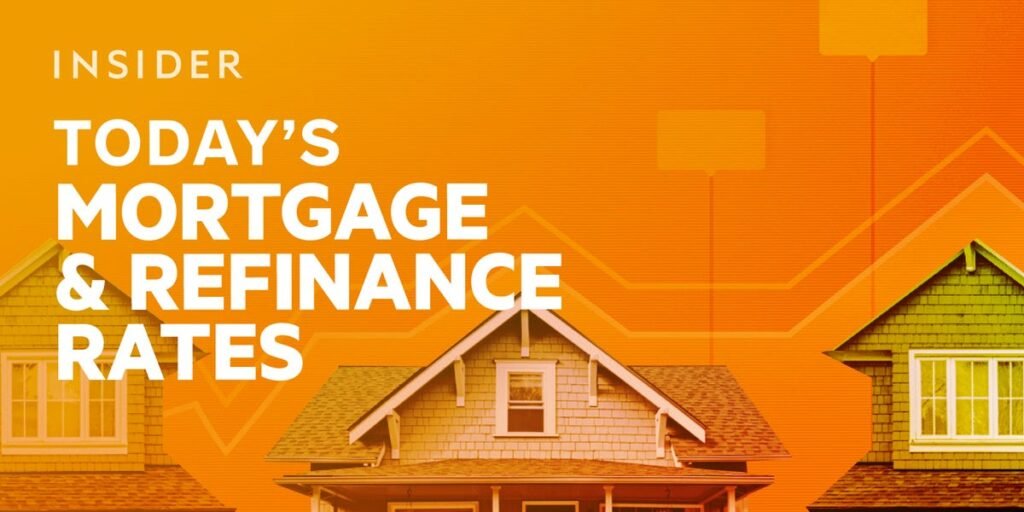Affiliate links for the products on this page are from partners that compensate us (see our advertiser disclosure with our list of partners for more details). However, our opinions are our own. See how we rate mortgages to write unbiased product reviews.
Last week, 30-year mortgage rates averaged 6.06%, according to Zillow. This is the lowest rates have been since April 2023. Mortgage rates dropped last week in response to July’s weaker-than-expected labor market data, though they’re up slightly today.
As mortgage rates go down, more homeowners will have an opportunity to refinance and save money on their monthly mortgage payments. In fact, depending on the rate you’re currently paying, it could make sense to refinance now.
In August 2023, mortgage rates were up near 7%. On a $300,000 loan, a 7% rate will result in a mortgage payment of $1,996 (not including taxes and insurance). With a 6% rate, you’d pay almost $200 less per month on that same loan.
Refinancing can help make space in your budget for other needs, wants, and financial goals. But it’s not free. It costs on average $5,000 to refinance, according to Freddie Mac. So whether it makes sense for you to refinance or not depends on how much you could save and how long you plan to stay in your home, since it will take some time for you to recoup your closing costs.
You may also have the option to have the lender pay your closing costs in exchange for a higher rate, or roll your costs into your loan amount. This can make sense in some situations, but be sure to weigh your monthly savings against your longer term interest costs.
Mortgage Rates Today
| Mortgage type | Average rate today |
|
|
|
|
|
|
|
|
|
|
|
|
|
|
|
|
|
|
|
|
|
Mortgage Refinance Rates Today
| Mortgage type | Average rate today |
|
|
|
|
|
|
|
|
|
|
|
|
|
|
|
|
|
|
|
|
|
Mortgage Calculator
Use our free mortgage calculator to see how today’s mortgage rates will affect your monthly and long-term payments.
Mortgage Calculator
$1,161
Your estimated monthly payment
- Paying a 25% higher down payment would save you $8,916.08 on interest charges
- Lowering the interest rate by 1% would save you $51,562.03
- Paying an additional $500 each month would reduce the loan length by 146 months
By plugging in different term lengths and interest rates, you’ll see how your monthly payment could change.
30-Year Fixed Mortgage Rates
The average 30-year fixed mortgage rate was 6.73% this week, according to Freddie Mac. This is five basis points lower than it was the week before.
The 30-year fixed-rate mortgage is the most common type of home loan. With this type of mortgage, you’ll pay back what you borrowed over 30 years, and your interest rate won’t change for the life of the loan.
The lengthy 30-year term allows you to spread out your payments over a long period of time, meaning you can keep your monthly payments lower and more manageable. The trade-off is that you’ll have a higher rate than you would with shorter terms or adjustable rates.
15-Year Fixed Mortgage Rates
Average 15-year mortgage rates were 5.99% this week, according to Freddie Mac data, which is an eight-basis-point decrease from the previous week.
If you want the predictability that comes with a fixed rate but are looking to spend less on interest over the life of your loan, a 15-year fixed-rate mortgage might be a good fit for you. Because these terms are shorter and have lower rates than 30-year fixed-rate mortgages, you could potentially save tens of thousands of dollars in interest. However, you’ll have a higher monthly payment than you would with a longer term.
Are Mortgage Rates Going Down?
Mortgage rates increased throughout most of 2023. But mortgage rates are expected to trend down in the coming months and years.
In the last 12 months, the Consumer Price Index rose by 3.0%. As inflation comes down and the Federal Reserve is able to start cutting the federal funds rate, mortgage rates should fall further as well.
For homeowners looking to leverage their home’s value to cover a big purchase — such as a home renovation — a home equity line of credit (HELOC) may be a good option while we wait for mortgage rates to ease. Check out some of our best HELOC lenders to start your search for the right loan for you.
A HELOC is a line of credit that lets you borrow against the equity in your home. It works similarly to a credit card in that you borrow what you need rather than getting the full amount you’re borrowing in a lump sum. It also lets you tap into the money you have in your home without replacing your entire mortgage, like you’d do with a cash-out refinance.
Current HELOC rates are relatively low compared to other loan options, including credit cards and personal loans.
How Do Fed Rate Hikes Affect Mortgages?
The Fed aggressively raised the federal funds rate in 2022 and 2023 to slow economic growth and get inflation under control. As a result, mortgage rates spiked.
Mortgage rates aren’t directly impacted by changes to the federal funds rate, but they often trend up or down ahead of Fed policy moves. This is because mortgage rates change based on investor demand for mortgage-backed securities, and this demand is often impacted by how investors expect Fed hikes to affect the broader economy.
Now that the Fed has paused hiking rates, mortgage rates have come down a bit. Once the Fed starts cutting rates, which may happen this year, mortgage rates should fall even further.

